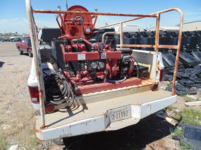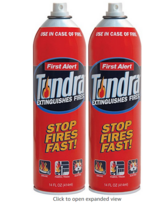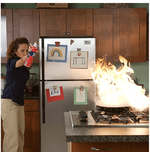- Messages
- 257
- Reactions
- 265
There are a wide variety of extinguishers out there. Quite a few above have covered good points. I'll add a few more.
If your ABC extinguisher is high quality and has a metal valve assembly, the lifespan can be very long. In excess of 20 years easily with proper service.
Commercial requires monthly inspection. Annually they are treated to a quick service and a new tag is installed. Every five years they require a professional service disassemble and hydrostatic test the cylinder integrity. The valve and drop tube are also inspected and repaired at that time before reassembly.
Monthly inspection is easy. Gauge in green. Pin and retainer in place. Nozzle in place and clear of obstructions.
Annual inspections do the same as a monthly with the addition of checking the hydrotest date stamp, or label. The Dry chem ABC extinguisher is inverted and a rubber mallet is used to dislodge the caked powder. You can feel is flow back and forth by rocking it gently on its side when you get done. Do use a rubber mallet so you do not damage the pressure vessel. Last is replacing the monthly inspection tag.
Extinguishers with plastic valving are disposable and not serviceable. You can still do monthly inspections and annual service. Dispose if they do not pass inspection. Using them for practice is a great plan. Everyone in the household should have used a fire extinguisher at least once before it is ever needed for real.
CO2 are fun, but not a good choice for a household extinguisher. They can put out fire, but lack the residue from the dry chem that continues to suppress the smoldering fire. The ABC dry chem may have some mess, but is a more efficient choice and works better for a wider variety of fires.
More than 20 years in the fire service I picked up a little about extinguishers
If your ABC extinguisher is high quality and has a metal valve assembly, the lifespan can be very long. In excess of 20 years easily with proper service.
Commercial requires monthly inspection. Annually they are treated to a quick service and a new tag is installed. Every five years they require a professional service disassemble and hydrostatic test the cylinder integrity. The valve and drop tube are also inspected and repaired at that time before reassembly.
Monthly inspection is easy. Gauge in green. Pin and retainer in place. Nozzle in place and clear of obstructions.
Annual inspections do the same as a monthly with the addition of checking the hydrotest date stamp, or label. The Dry chem ABC extinguisher is inverted and a rubber mallet is used to dislodge the caked powder. You can feel is flow back and forth by rocking it gently on its side when you get done. Do use a rubber mallet so you do not damage the pressure vessel. Last is replacing the monthly inspection tag.
Extinguishers with plastic valving are disposable and not serviceable. You can still do monthly inspections and annual service. Dispose if they do not pass inspection. Using them for practice is a great plan. Everyone in the household should have used a fire extinguisher at least once before it is ever needed for real.
CO2 are fun, but not a good choice for a household extinguisher. They can put out fire, but lack the residue from the dry chem that continues to suppress the smoldering fire. The ABC dry chem may have some mess, but is a more efficient choice and works better for a wider variety of fires.
More than 20 years in the fire service I picked up a little about extinguishers














